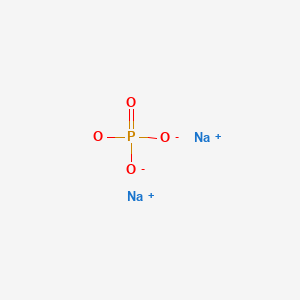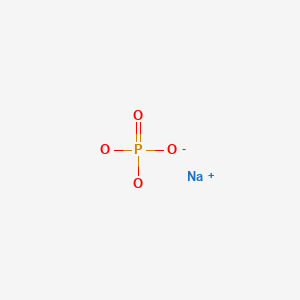Attribution Statement: LactMed is a registered trademark of the U.S. Department of Health and Human Services.
NCBI Bookshelf. A service of the National Library of Medicine, National Institutes of Health.
Drugs and Lactation Database (LactMed®) [Internet]. Bethesda (MD): National Institute of Child Health and Human Development; 2006-.
CASRN: 7558-79-4; 7558-80-7


Drug Levels and Effects
Summary of Use during Lactation
Phosphate is a normal constituent of breastmilk. Phosphate concentrations have not been measured in breastmilk after large maternal doses of sodium phosphate, such a 30 gram oral dose for pre-procedural bowel evacuation. However, the added phosphate in breastmilk is likely to be only about 130 mg over 24 hours in this situation. The increase from a typical dose of a rectal enema would be considerably less than this amount. Breastmilk sodium concentration is tightly regulated, and will not be affected. It is probably not necessary to suspend breastfeeding after the use of oral sodium phosphate solutions given once or twice for bowel evacuation before a procedure. Use of a phosphate rectal enema by a nursing mother would require no special precautions.
Drug Levels
Phosphate is a normal constituent of breastmilk.[1,2] Infants normally receive about 130 mg of inorganic phosphate daily from breastmilk.[2]
Maternal Levels. Administration of a 30 gram dose of oral sodium phosphate solution (e.g., Visicol) approximately doubles the maternal serum phosphate concentration, with serum concentrations returning to baseline about 24 hours after the dose.[3,4] Assuming breastmilk phosphate concentration also doubles, the increased phosphate dose to the infant would be only 130 mg for one day.
Administration of a phosphate enema (2 Fleet Enemas, containing a total of 14 grams of sodium phosphate dibasic and 38 grams of sodium phosphate monobasic) to 33 subjects increased serum phosphate by an average of about 25% (range 0.1 to 2.5 mg/dL).[5] In one other patient, a phosphate enema (Practo Clyss 120, containing a total of 7.2 grams of sodium phosphate dibasic and 19.2 grams of sodium phosphate monobasic) increased serum phosphate by 35% (by 0.8 mmol/L) after a single dose.[6]
Infant Levels. Relevant published information was not found as of the revision date.
Effects in Breastfed Infants
Relevant published information was not found as of the revision date.
Effects on Lactation and Breastmilk
Relevant published information was not found as of the revision date.
References
- 1.
- Kent JC, Arthur PG, Retallack RW, et al. Calcium, phosphate and citrate in human milk at initiation of lactation. J Dairy Res. 1992;59:161–7. [PubMed: 1613174]
- 2.
- Allen JC, Keller RP, Archer P, et al. Studies in human lactation: Milk composition and daily secretion rates of macronutrients in the first year of lactation. Am J Clin Nutr. 1991;54:69–80. [PubMed: 2058590]
- 3.
- Visicol package insert. Salix Pharmaceuticals, Inc; December 2010.
- 4.
- Ehrenpreis ED. Increased serum phosphate levels and calcium fluxes are seen in smaller individuals after a single dose of sodium phosphate colon cleansing solution: a pharmacokinetic analysis. Aliment Pharmacol Ther. 2009;29:1202–11. [PubMed: 19298584]
- 5.
- Schuchmann GD, Barcia PJ. Phosphate absorption from fleet enemas in adults. Curr Surg. 1989;46:120–2. [PubMed: 2736963]
- 6.
- Rimensberger P, Schubiger G, Willi U. Connatal rickets following repeated administration of phosphate enemas in pregnancy: a case report. Eur J Pediatr. 1992;151:54–6. [PubMed: 1728548]
Substance Identification
Substance Name
Sodium Phosphate
CAS Registry Number
7558-79-4; 7558-80-7
Disclaimer: Information presented in this database is not meant as a substitute for professional judgment. You should consult your healthcare provider for breastfeeding advice related to your particular situation. The U.S. government does not warrant or assume any liability or responsibility for the accuracy or completeness of the information on this Site.
- User and Medical Advice Disclaimer
- Drugs and Lactation Database (LactMed) - Record Format
- LactMed - Database Creation and Peer Review Process
- Fact Sheet. Drugs and Lactation Database (LactMed)
- Drugs and Lactation Database (LactMed) - Glossary
- LactMed Selected References
- Drugs and Lactation Database (LactMed) - About Dietary Supplements
- Breastfeeding Links
- PubChem SubstanceRelated PubChem Substances
- PubMedLinks to PubMed
- Review Sodium Phosphate P 32.[Drugs and Lactation Database (...]Review Sodium Phosphate P 32.. Drugs and Lactation Database (LactMed®). 2006
- Review Alcohol.[Drugs and Lactation Database (...]Review Alcohol.. Drugs and Lactation Database (LactMed®). 2006
- Crystal structure and proton conductivity of a new Cs(3)(H(2)PO(4))(HPO(4))·2H(2)O phase in the caesium di- and monohydrogen orthophosphate system.[Acta Crystallogr C Struct Chem...]Crystal structure and proton conductivity of a new Cs(3)(H(2)PO(4))(HPO(4))·2H(2)O phase in the caesium di- and monohydrogen orthophosphate system.Ponomareva V, Bagryantseva I, Zakharov B, Bulina N, Lavrova G, Boldyreva E. Acta Crystallogr C Struct Chem. 2017 Oct 1; 73(Pt 10):773-779. Epub 2017 Sep 19.
- Review Sodium Picosulfate.[Drugs and Lactation Database (...]Review Sodium Picosulfate.. Drugs and Lactation Database (LactMed®). 2006
- Review Cellulose and Citric Acid.[Drugs and Lactation Database (...]Review Cellulose and Citric Acid.. Drugs and Lactation Database (LactMed®). 2006
- Sodium Phosphate - Drugs and Lactation Database (LactMed®)Sodium Phosphate - Drugs and Lactation Database (LactMed®)
Your browsing activity is empty.
Activity recording is turned off.
See more...
